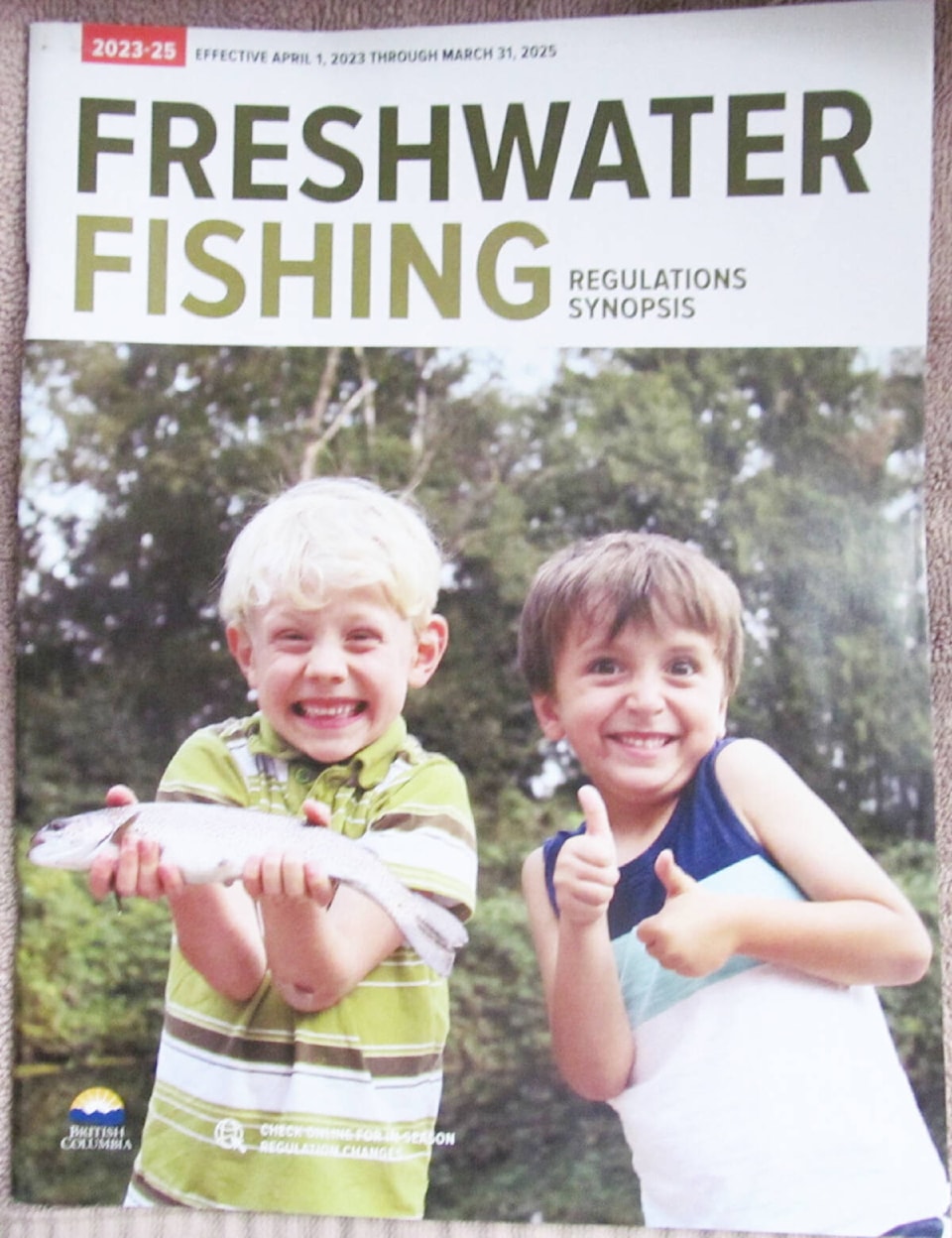Over the years that I have taught fly-fishing courses, one of the first things I cover is the definition of “artificial fly” and “fly fishing” designations in the Freshwater Fishing Regulations Synopsis. It is a distinction I feel must be understood by budding fly fishers.
The synopsis, although seemingly complex to some, is a systematic summary of the regulations as described on page one, first outlining the Provincial Regulations and Licensing Requirements, then the Regional Regulations (which show maps of the Region boundaries), followed by the Water-Specific Regulations. There is also a reminder about possible In-season Regulation modifications that reflect changes to the Regulations that may happen after the synopsis (which is usually in effect for two years) has been published.
These changes will be posted on the Ministry of Forests/Freshwater Fishing Regulations on the B.C. website www.gov.bc.ca/FishingRegulations and listed under Regional Synopsis Information and Changes. It is important to note, as written on page one “You and the Law”, that the BC Freshwater Fishing Regulations Synopsis is for information purposes and if there is a discrepancy between the synopsis, and the regulation, the regulations are the final authority.
That is why it is important to check the website on occasion for any changes that may affect the regulations in the region one may want to fish in. To make it easy to be aware of any in-season changes or other important notices a person may subscribe to the page(s) they may be interested in by visiting www.gov.bc.ca/FishingRegulations. In addition, the public can review and provide feedback on proposed changes to pertinent regulations online at apps.nrs.gov.bc.ca/ahte/.
Now, after mentioning the information on page one, I will return to the definitions of “Artificial Fly” and “Fly Fishing” explanations found on page 80 of the current Regulations Synopsis, along with other definitions. These designations are used in the Water-Specific Regulations in each Region. Instead of taking the time to describe each one in this column, I encourage those interested to read the definitions and compare the differences between the two.
In Region 5, both of these designations can be found in the Water-Specific Regulations. It is important to note that if a particular body of water is not mentioned in the Water-Specific Regulations, then the General Regulations and Region Daily Quotas apply as well as the Provincial Regulations.
I had a great opportunity to talk to Sergeant Jesse Jones, and co-worker Connor Bain of the BC Conservation Officer Service here in 100 Mile House. They were gracious enough to take time out of their busy schedule to answer many of the questions I had about their role of making sure fishers were following the Freshwater Fishing Regulations.
They both explained that what they seek is compliance, and the first thing they ask to see is a current BC fishing licence and photo ID such as a driver’s licence, PAL, or Services BC Card. They mentioned that if people keep their licence information on their cell phone, they recommended that it be in the form of a PDF. Providing just their angling number is not acceptable. They also reminded me that fishing is a regulated activity and people should check the regulations before heading out onto the water.
One of the questions I asked was what the most common violations they encountered were. During the ice fishing season, Jones explained unattended lines, commonly known as a set line was one of the main violations. Another is finding people fishing without a licence, or with an expired licence.
People are also caught using banned bait such as finfish or parts thereof, (salmon eggs are the exception). It is illegal to use finfish or transport them for freshwater fishing here in this region. Again, always check the regulations if unsure.
People have also been found to be using more than one line while angling open water or ice fishing. The exception is an angler can use two lines when fishing alone in a watercraft. A number of people, both officers mentioned, are found to possess more than their limit of fish, in both size and species.
They further observed that despite having photos and descriptions of freshwater fish in BC in the regulations, many people they encounter cannot identify what species they have caught. Other infractions mentioned were using bait when not allowed (bait also includes scents as described in page eight of the synopsis), using treble hooks when banned, and failing to use barbless hooks when noted in the Water Specific Regulations. Jones also informed me that a lot of people they check do not have a copy of the Regulations and confess they have not even read them.
While I have listed a few of the most common infractions, there are many other regulations they find people not in compliance with. Jones also asked me to remind people that non-tidal annual fishing licences are issued from April 1 to March 31 and that their expiry is coming soon. Licences can be purchased at Front Counter BC, and online at www.gov.bc/fish-licence, most sporting goods stores, resorts, and other licence vendors.
I will close with another quote from Patrick McManus “the best time to go fishing is when it is raining, or when it ain’t.”
